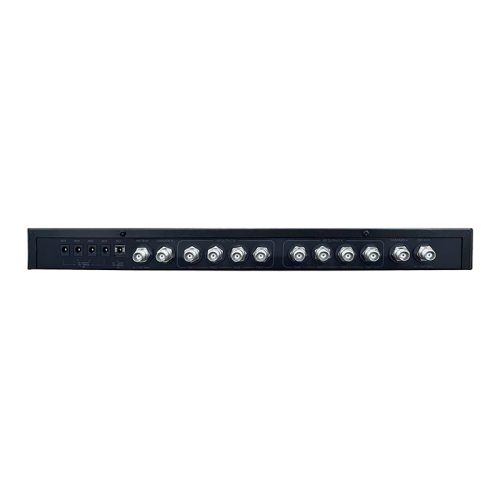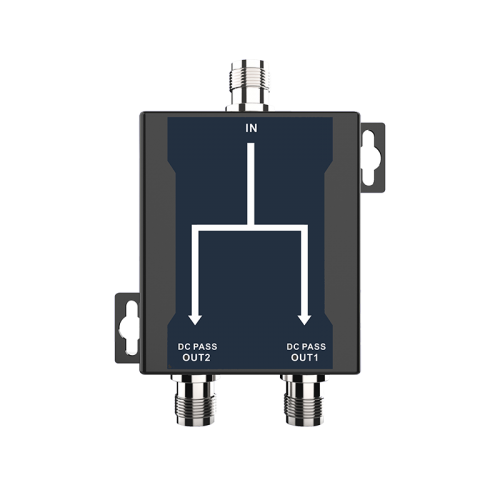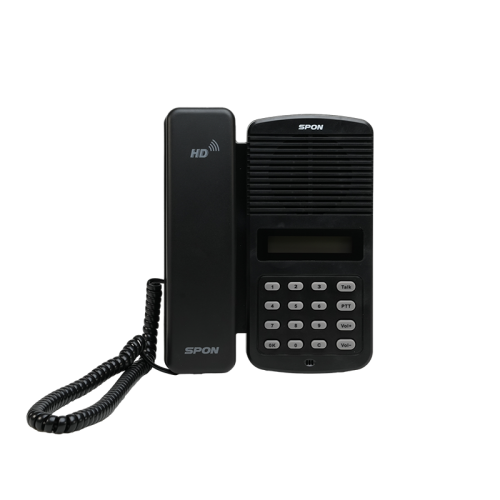The Ultimate Overview to Establishing Your IP PA System Successfully
The Ultimate Overview to Establishing Your IP PA System Successfully
Blog Article
Comprehensive Guide to Public Address Systems
Public address (PA) systems are generally encountered in different jobs such as office complex, property facilities, business office buildings, colleges, healthcare facilities, train terminals, flight terminals, bus factories, financial institutions, and stations - IP Paging System. This overview will offer a comprehensive overview of PA systems

Components of a PA System
Despite the kind of PA system, it normally consists of 4 main components: resource tools, signal boosting and processing devices, transmission lines, and audio speaker systems.
Resource Equipment
Songs Players: Utilized for background songs.
Microphones: Consists of basic microphones and zone-select microphones.
Voice Storage Tools: For storing service and emergency situation broadcast messages.
Signal Processing and Boosting Equipment
Sound Signal Cpu: Deals with audio signal payment, attenuation, equalization, etc.
Pre-Amplifier: Pre-amplifies audio signals.
Power Amplifier: Intensifies audio signals to drive audio speakers, supplying constant voltage outcome.
Transmission Lines
The solution monitoring platform software application allows the surveillance facility to exert centralized administration over the program and intercom communication systems. It facilitates online device standing surveillance, mistake diagnosis, and troubleshooting, solidifying system reliability and uniformity.
Speakers
Ceiling Speakers: Indoor, flush-mounted in the ceiling, constant voltage or continuous impedance.
Wall-Mounted Speakers: Wall-mounted, continuous voltage or consistent resistance.
Column Audio Speakers: Free-standing, suitable for exterior or interior use.
Horn Speakers: High level of sensitivity, ideal for indoor or outside use.
Camouflaged Audio speakers: For outdoor setups like gardens or parks, made to resemble rocks, stumps, or mushrooms.
Audio Technical Specs of PA Systems
In everyday atmospheres, typical sound pressure degrees are:.
• Workplace sound: 50-60 dB.
• Regular discussion: 65-70 dB.
• Fabric manufacturing facility noise: 110-120 dB.
• Small quality gunfire: 130-140 dB.
• Large jet aircraft noise: 150-160 dB.
Signal-to-Noise Ratio (SNR)
SNR gauges the proportion of the signal voltage to sound voltage, expressed in decibels. A higher SNR indicates less sound and much better audio quality. Normally, SNR needs to be at the very least 63 dB, with high-fidelity speakers getting to over 110 dB.
Input Sensitivity
This is the minimal input voltage needed to accomplish the rated output power. Higher sensitivity suggests less input signal is required. Generally, power amplifiers have an input sensitivity of 0.775 V (0 dB) to 1.5 V (+6 dB).
Maximum Outcome Power (Speakers)
The optimal power an audio speaker can manage simply put ruptureds without damages.
Rated Power (Audio Speakers)
.
The constant power an audio speaker can take care of without distortion, determined in watts (W) Ranked power is an average worth, and audio speakers can handle peak power approximately 2-3 times the rated power.
Continuous Voltage vs. Constant Resistance Outputs
Continuous Voltage (70V or 100V)
Makes use of voltage to drive speakers, permitting longer transmission distances and several speakers in parallel. Nonetheless, sound top quality is a little inferior compared to continuous resistance systems.
Power amplifiers must match the voltage rating of the audio speakers to prevent damage.
Continuous Resistance.
Utilizes existing to drive speakers, giving much better sound quality but limited transmission distance (as much as 100 meters)
Resistance matching is crucial; for example, an 8Ω amplifier must be matched with 8Ω audio speakers.
Picking and Configuring Audio Speakers
Audio speaker Choice
Indoor Spaces with Ceiling: Use flush-mounted ceiling audio speakers without a back cover.
Indoor Spaces with Just a Structure: Use ceiling speakers with back covers or hanging ball-type audio speakers.
Outdoor Areas: Use weatherproof column speakers or horn audio speakers.
Parks and Gardens: Use masked audio speakers created for visual purposes.
High-End Interiors: Use classy hanging speakers.
Fire-Safe Locations: Use fire-resistant speakers with sealed styles.
Speaker Setup
Audio speakers should be distributed evenly throughout the service area to make sure a signal-to-noise ratio of at the very least 15 dB. Typical history sound degrees and recommended speaker placement are:.
Premium workplace hallways: 48-52 dB.
Large buying malls: 58-63 dB.
Active street locations: 70-75 dB.
Audio speakers ought to be positioned to make certain an audio pressure degree of 80-85 dB in a lot of environments. Ceiling audio speakers ought to be spaced 5-8 meters apart, or 8-12 meters for history songs only. For emergency situation broadcasts, make certain that no location is greater than 15 meters from the closest audio speaker.
Amplifier Sizing
Calculation Method:
For solution and organization PA systems: P= K1 × K2 × ΣPo where:.
P = Overall amplifier result power (W)
K1 = Line loss payment aspect.
K2 = Aging element (1.2-1.4)
ΣPo = Complete power demand.
For emergency alarm systems, utilize 1.5 times the overall number of speakers.
Instance Estimation:
For a background songs system with 10 audio speakers at 20W each: P= 1.26 × 1.2 × 10 × 20W × 0.7= 211W.
Final amplifier ability must be 1.3 times this worth: 211W × 1.3= 274W
Installation Needs
Speaker Placement
Speakers should be evenly and strategically dispersed to fulfill insurance coverage and sound top quality needs
Power Supply
Tiny PA systems can make use of regular power electrical outlets, while systems over 500W need a dedicated power supply. Power must be secure, with automatic voltage regulatory authorities if necessary. The power supply must be 1.5-2 times the devices's power consumption
Cord and Avenue Setup
Usage copper-core cords for signal transmission. Wires should be protected and transmitted via proper avenues, avoiding interference from electric lines. Ensure proper splitting up between power and signal lines.
Lightning Security and Grounding
PA systems call for appropriate grounding to avoid damage from lightning and electrical disturbance. Use committed grounding for equipment and make certain all basing actions meet safety standards
Installment Quality
Cord and Port Quality
Usage high-grade cables and adapters. Make certain connections are safe and correctly matched to avoid signal loss or interference.
Speaker Connections
Maintain appropriate phase positioning between speakers. Use trustworthy techniques for connecting wires, such as incurable or soldering blocks, and shield links from environmental damages.
Grounding and Security Checks
Confirm all grounding is correctly installed and inspect the security of power connections and equipment setups. Do detailed assessments prior to completing the installation.
Testing and Adjustment
Examine the entire system to ensure all parts function properly and meet design specs. Change settings as needed for optimal performance.
Workmanship Requirements for Public Address Solutions
Building And Construction Top Quality Demands
The high quality of building and construction in a public address (PA) system task is vital to meeting style specifications and user requirements. It is crucial to purely adhere to the style plans, stick to criteria, prevent rework and delays, and preserve comprehensive building and construction logs. Trick areas to concentrate on include:
Wire Choice and Installment
Throughout the building of a PA system, interest is often concentrated on equipment, but the option of transmission wires is likewise essential for achieving satisfying audio quality. High-grade broadcasting equipment (amplifiers, audio speakers, and so on) is needed, yet the top quality of the transmission wires likewise influences audio high quality.
Identical speaker cords have inherent capacitance between the wires, which is not suitable for long-distance transmission as it can attenuate high frequencies and trigger vague or smothered high sounds. Twisted pair cables can properly conquer this concern and should be utilized for long-distance transmission.
Protected twisted pair cable televisions protect against electro-magnetic disturbance and boost cable durability, making them suitable for long-distance installations. The diameter of the cable televisions also affects performance. Thicker cables decrease transmission loss but increase price and installation difficulty. The selection of wires need to balance performance and cost, following these criteria:.
Usage balanced connections for all signal links between PA system devices, with soldered endpoints.
For systems with smoke alarm features, utilize flame-retardant or fire-resistant copper-core cable televisions.
Cable televisions should be transmitted via steel channels or cable television trays, and should not share trays with illumination or power lines. Fire alarm system wires should have fire protection actions. The flexing radius of cables must be no much less than 15 times the cable television size, and power wires ought to be divided from signal and control cable televisions. Confirm cable sizes before installment and match them to the design drawings, lessening cable television splices. Utilize specialized connectors and leave sufficient wire length at both ends with clear long-term markings when splicing is necessary
.

Linking Audio Speakers and Program Lines
When connecting audio devices, it's critical to ensure phase uniformity in between audio speakers and program lines. Stage interference between speakers can cause significant variants in audio stress levels, bring about irregular audio circulation. Therefore, adhere strictly to wiring labels and standard connection techniques
.
Three common connection techniques in PA systems are:.
Twisting Method: Stripping insulation from cables, turning them with each other, and safeguarding them with tape or clamps. This technique is basic yet might degrade in time.
Screw Terminal Method: Stripping insulation and placing wires right into screw terminals, then tightening up the screws. This technique is generally used.
Soldering Technique: Removing insulation, twisting wires, and soldering them together, then covering with tape. This method is more trustworthy and appropriate for high-demand or moist atmospheres.
No matter the technique, usage tinned cord to help with soldering and protect against rust. Usage PVC or metal avenue to secure subjected wires from joint boxes to speakers.
System Grounding
The PA control area ought to have both operational and protective grounding. To minimize disturbance from the power system, different safety and functional groundings need to be established. Advised method is to install separate copper strips for strong and weak electric systems in their particular vertical shafts. This ensures optimum operation of the weak electrical system.
The general grounding resistance ought to not exceed 1Ω.
Building and construction Inspection
Due to the complexity of PA systems with various links and components, extensive assessment is needed. General evaluations must consist of:
Safety checks of devices installment.
Verification of high-voltage line configurations (SPON Communications).
Precision of connections and terminations
Unique focus should be provided to tool setups, such as resistance matching turn on audio speakers. Confirm that buttons are set properly to stay clear of damages. Inspect the result option turns on signal resource tools, settings on signal processing equipment, amplifier linking switches, and power supply settings.
When these steps are validated, prepare for equipment debugging. Considering that debugging methods vary based on particular project demands, they are not covered thoroughly below.
Quality Records
Certifications, technical specs, and paperwork for speakers, enclosures, transformers, controllers, electrical outlets, amplifiers, audio processing tools, secured cable televisions, etc.
Pre-installation, covert evaluation, self-inspection, and shared evaluation records.
Records of style changes and last drawings - IP Paging System.
Quality examination and examination documents for avenue and cord installation
Records of PA system installment and debugging.
Major Installation Needs
Devices Setup Order
PA system tools is normally mounted in cupboards. For less complex systems, a 1.0-meter cupboard may be sufficient. Area often used tools like the major broadcast controller at the top for very easy access. For even more complicated systems with a 2.0-meter closet, setting often made use of tools in between 0.8 to 1.5 meters for benefit
.
Equipment Connection Order
Connect the computer system to the primary broadcast controller. Audio lines generally attach directly to the input of the preamplifier or the very first channel of the mixer. The mixer results are dispersed to each amplifier, and if making use of pure power amplifiers, connect to the INPUT sound input. Amplifier results after that attach to addressable terminals, area control boxes, or zone selectors, and lastly to the speakers
.
Circuitry Considerations
For extensive electrical wiring, different sound and high-voltage line using various producers' cables can aid prevent confusion. Plan wiring beforehand to prevent missing cables, which would certainly require redoing the entire installation.
Power Supply
Use a committed power sequencer for PA systems to guarantee uniform power administration and consistent tool startup series. The main power supply must consist of a ground line to shield tools and avoid static-related threats
Devices Option
Do not rely entirely on appearance; consider user reviews and market reputation. Products from respectable producers with extensive testing and experience are usually a lot more reputable
Wireless Microphones
For cordless microphones, choose UHF versions for much better array and signal security. Alternatives include one-to-one, one-to-two, one-to-four, or one-to-eight configurations. For mobile usage, like headset microphones. Lavalier microphones may have poorer audio quality and are vulnerable to feedback
.
Link Cable televisions
Use strong connections for longevity and stay clear of counting on adapters, which can trigger loose connections with time. Appropriately solder links SPON Communications to make certain sturdiness and convenience of upkeep.
Cupboard Installment
If using deep power amplifiers, guarantee the closet measurements (e.g., 600x600mm) work with the equipment. Action closet depth and spacing before installment.
Correct preparation, high-quality equipment, and careful installment and maintenance are crucial to achieving optimal sound high quality and reputable performance in a system.

Audio speakers must be put to make certain an audio stress degree of 80-85 dB in the majority of settings. When linking audio tools, it's essential to make certain stage uniformity in between audio speakers and program lines. Stage interference between audio speakers can cause significant variants in audio stress degrees, leading to uneven sound circulation. Amplifier outputs after that link to addressable terminals, zone control boxes, or area selectors, and ultimately to the audio speakers.
Report this page